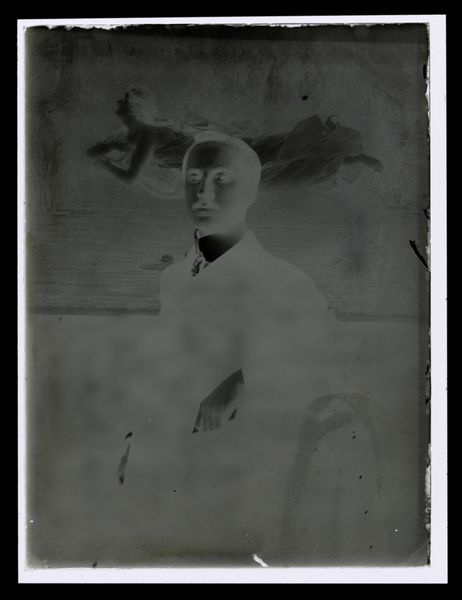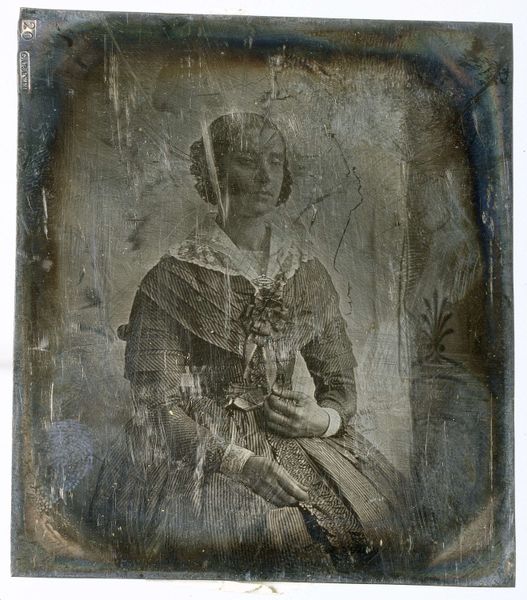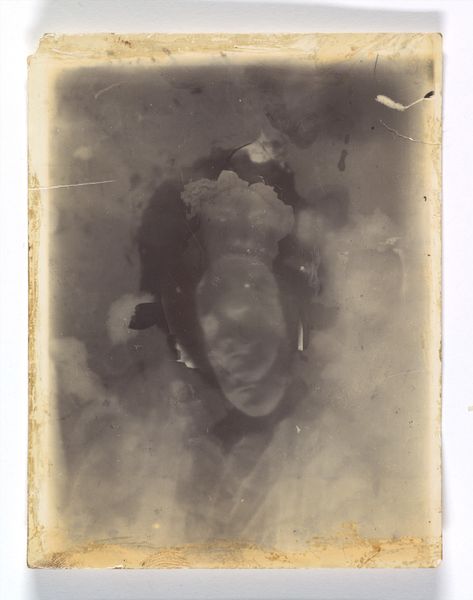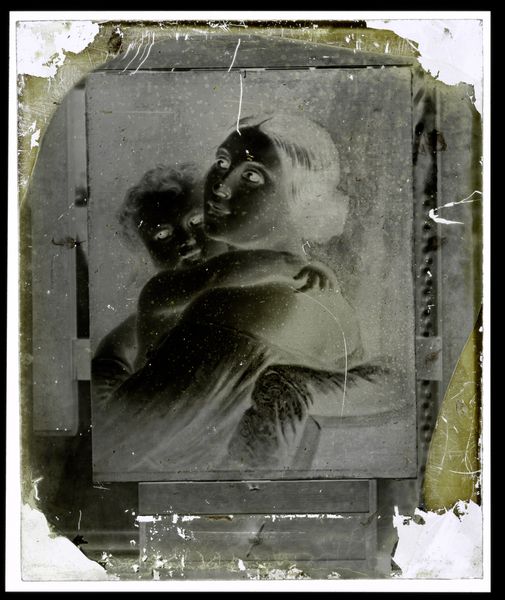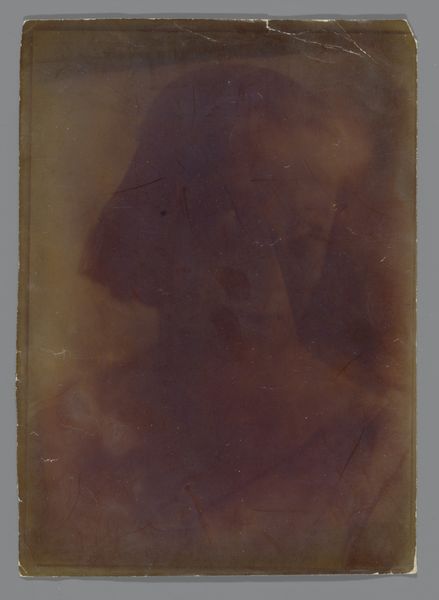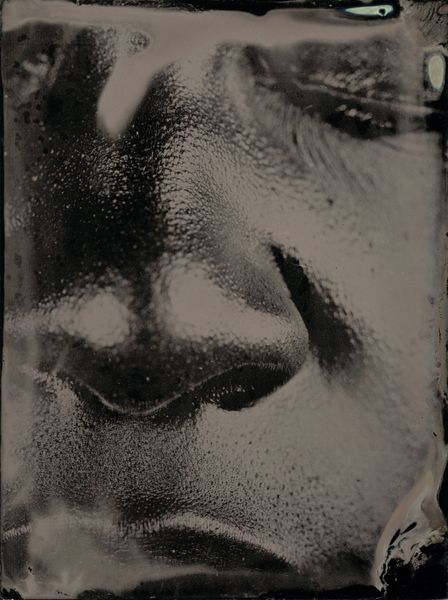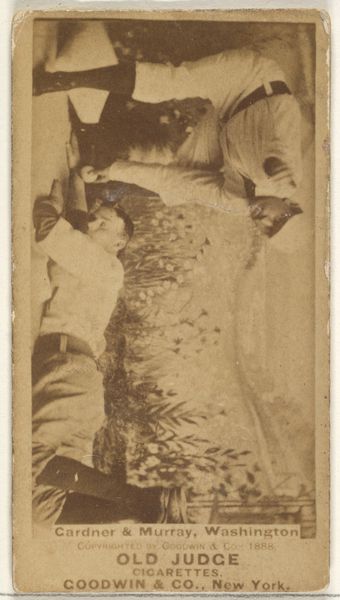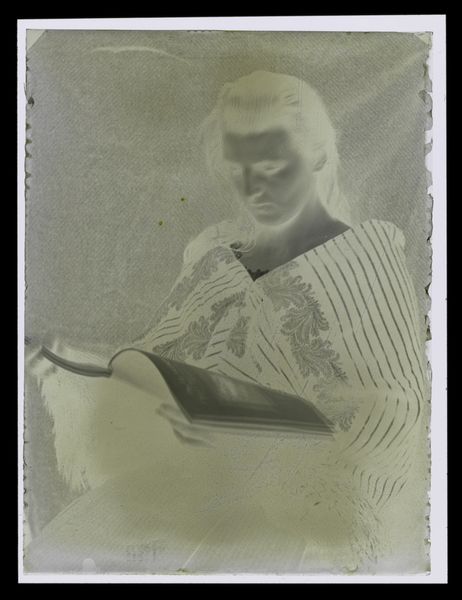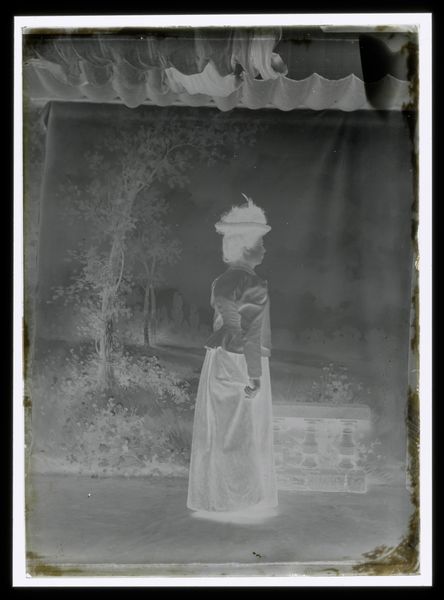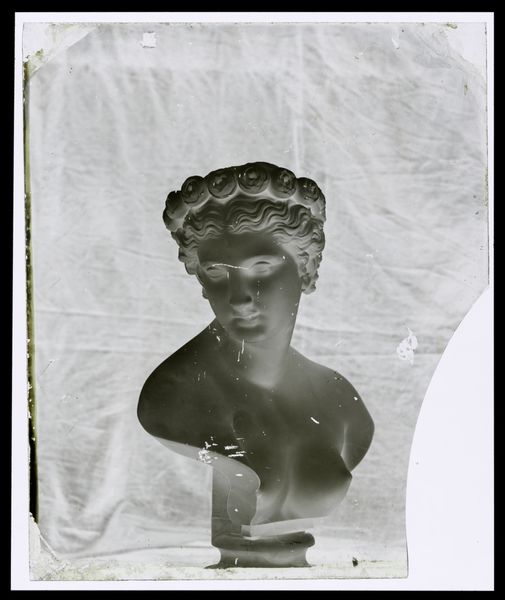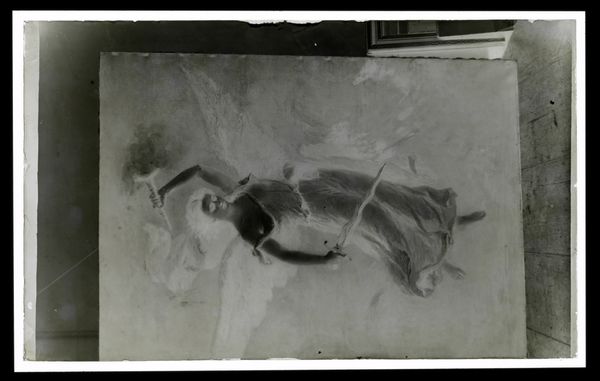
photography, gelatin-silver-print
#
portrait
#
black and white format
#
b w
#
photography
#
black and white theme
#
framed image
#
black and white
#
repetition of black colour
#
gelatin-silver-print
#
realism
Dimensions: height 185 mm, width 207 mm
Copyright: Rijks Museum: Open Domain
Editor: Here we have what appears to be a photographic portrait, “Portet van Marianne van Oranje-Nassau,” likely created between 1865 and 1883, using a gelatin silver print technique. It's striking how fragile the image seems, given the visible wear and tear. How do we understand such degradation in light of its subject? Curator: The decay isn’t just visual, it's historical and social. Consider the materiality of a gelatin silver print: the cost of materials, the labour involved in its production, and the consumption of these images by a growing middle class in the 19th century. This wasn't painting, which carried significant status. This was relatively reproducible. Does that change our perspective of a Royal portrait? Editor: I suppose so. Knowing it was more accessible at the time gives it a different weight. I had assumed photographic portraits of royalty would always be exclusive objects. Curator: Exactly. And look closely at the imperfections. They speak to the actual handling, the real-world conditions the photograph has endured. Where does that put us in terms of separating 'high' art and something produced for more widespread circulation? Think about how labour practices around photographic production differed for portraiture versus something designed for mass distribution, perhaps. What labour created it and who owned that labour? Editor: I never thought about the production processes in those terms. It's easy to get lost in the subject and overlook how the piece was actually made and consumed. Curator: These things are inseparable, ultimately. The value lies not just in the sitter or the image, but in understanding the photograph as a product of its time, of industrial advancements, and shifting social structures. Editor: So it is more about the image’s life-cycle? The way it was made, marketed, and maybe, now, its deterioration becomes another part of the story. Thank you!
Comments
No comments
Be the first to comment and join the conversation on the ultimate creative platform.
